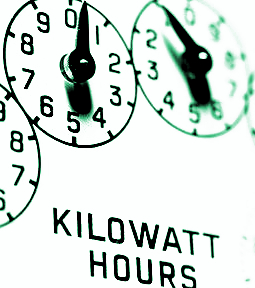Study plots green shift
 Experts say Australia will need to triple the National Electricity Market’s power capacity by 2030 to be on track for net zero by 2050.
Experts say Australia will need to triple the National Electricity Market’s power capacity by 2030 to be on track for net zero by 2050.
A groundbreaking study charts Australia’s path to net zero, and finds that the nation will need to engage in a rapid rollout of wind and solar power, transmission, storage, electric vehicles, and heat pumps as it replaces its coal fleet.
The study was completed by Net Zero Australia - a partnership of The University of Melbourne, The University of Queensland, Princeton University’s Andlinger Center for Energy and Environment, and Nous Group. It is funded by gifts and grants from various sponsors and has received input from a diverse advisory group.
The report says that around $7-9 trillion of capital will need to be committed to domestic and export energy and industrial infrastructure by 2060, which is up to 6 times the business-as-usual amount.
Group chair Professor Robin Batterham says Net Zero Australia has set a new benchmark in analysing what it would take for Australia to decarbonise its economy and exports.
“Our results are unprecedented in their detail, rigour and transparency,” Professor Batterham said.
“Our aim is to inform the national debate with better evidence about the diverse preferences of the Australian community.
“This includes reaching net zero with renewables only, or with different mixes of renewables and low-emission uses of fossil fuels, and with different rates of electrification of our energy use. We have even considered whether nuclear energy has a role to play.
“We are not pushing a preferred pathway, rather we are illustrating a range of potential pathways.”
Professor Michael Brear (Director of the Melbourne Energy Institute at the University of Melbourne) said the modelling shows that Australia will need all viable options to transform its energy system at an unprecedented pace and scale.
“Renewables and electrification, supported by a major expansion of transmission lines and storage, are keys to net zero,” said Professor Brear.
“But we will need an all technology, hands on deck approach. That includes a large increase in permanent carbon storage, deep underground and in vegetation, and a doubling of gas-fired power capacity to support renewables and energy storage.”
The group’s modelling shows that there would be no useful role for nuclear energy unless costs fall sharply (to around 30 per cent lower than current international best practice) and renewable energy growth is constrained.
Associate Professor Simon Smart (Associate Professor in Chemical Engineering at The University of Queensland) said that Australia has a global responsibility and economic incentive to transition coal and LNG exports to clean commodities.
“Hydrogen made from solar, wind and desalinated water can replace our fossil fuel exports. We can also export large volumes of clean hydrogen with large scale implementation of Carbon Capture and Storage,” said Associate Professor Smart.
“Exporting green metals, particularly iron and steel made in Australia using clean hydrogen, has much lower abatement and infrastructure costs than for exporting clean hydrogen.
“Our modelling also suggests that new gas fields may be needed to fulfil export demand for clean hydrogen, particularly if the growth in renewable construction rates hits limits.”
Katherin Domansky (independent Steering Committee member) says that net zero would bring major changes in employment and land use which create large opportunities and challenges.
“Renewable energy has great advantages in providing a sustainable source of energy to Australia and the world,” said Ms Domansky.
“Decarbonisation will provide up to 700,000 direct jobs, mainly in regional and rural Australia.
“However, renewables need much more land area than fossil fuels to produce a given amount of energy. Our renewable resources overlap the lands of First Nations and farming communities, and land with biodiversity value.
“Careful management will be needed to minimise adverse impacts, share benefits with affected communities and achieve a net gain in biodiversity.”







 Print
Print